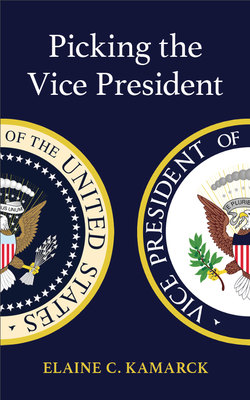Picking the Vice President

Реклама. ООО «ЛитРес», ИНН: 7719571260.
Оглавление
Elaine C. Kamarck. Picking the Vice President
Отрывок из книги
Picking the Vice President
Elaine C. Kamarck
.....
Sometimes, as with Carter and Mondale, these marriages of convenience worked. But often they did not. All too often the dynamic between the president and vice president ran the gamut from cold and distantly cordial to outright hostile. The result was vice presidents who were cut out of the action, relegated to trivial duties, or dispatched to attend funerals in foreign countries or to take part in other, largely ceremonial roles. If balance was the criterion for selection, it all but guaranteed that the office itself would be pretty uneventful. Formerly powerful senators suffered this fate. Harry Truman became a power in the Senate by taking on profiteering by defense contractors as America got ready for World War II.1 He gave up that key position for the vice presidency, a role in which he was kept so far out of the loop that he didn’t even know about the project to build the atom bomb until President Roosevelt died and Truman became president. Lyndon Johnson, the powerful Majority Leader of the Senate, found himself suffering one slight after another at the hands of Attorney General Bobby Kennedy, kid brother of the president.
What made this change possible was not so much the personal characteristics of Gore or Cheney—although they both were powerful and experienced men. As we will see, the office has been occupied by many accomplished and once powerful former governors and legislators. What changed the relationship between presidents and their vice presidents has its roots in the nomination process. Changes in the nomination process itself have diminished the importance of balance on the ticket and increased the importance of partnership.
.....